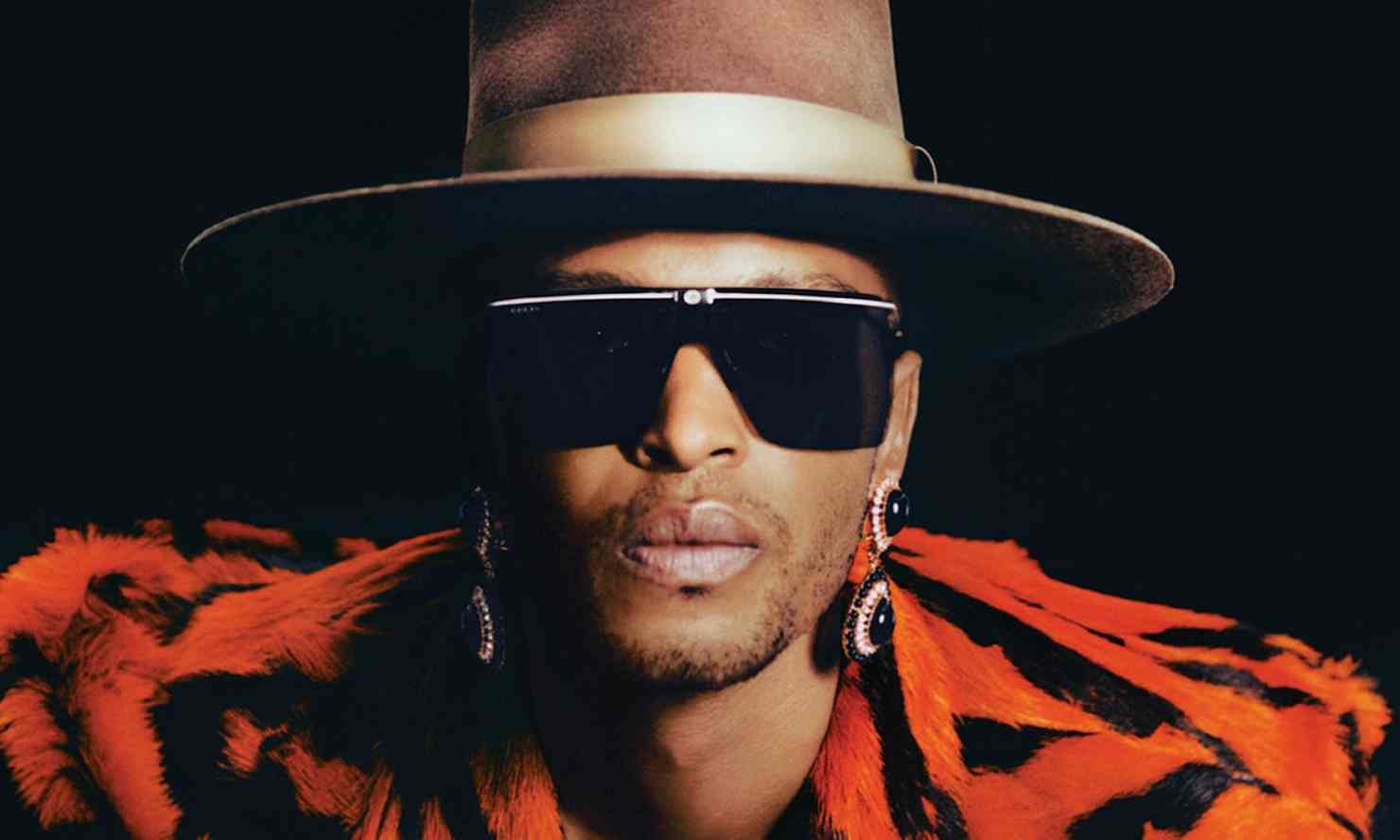
Of those galleries hosting dinners, Larry Gagosian’s is the biggest, with 19 locations around the globe. That evening the Houston-based artist Rick Lowe had debuted a suite of paintings at Gagosian in his first New York solo show, which had come on the heels of his inclusion in the Whitney Biennial earlier in the year. A line snaked down West 24th Street, and staff had to ensure passage for certain VIPs: Met director Max Hollein, Brooklyn Museum director Anne Pasternak, former cultural commissioner Tom Finkelpearl, the Ghanaian British architect Sir David Adjaye. The opening was set to close at 8 p.m., but by 8:30 the gallery was still thronged. Lowe, 61, finally arrived at Altro around 9, flanked by a dozen family members from Alabama, many of whom had never been to New York City. The restaurant was crowded with well-wishers. David Breslin, who would be announced as the new modern and contemporary curator at The Met in a few weeks, was chatting with the artist Cy Gavin. Gagosian COO Andrew Fabricant ate at a table stuffed with collectors. The artist Awol Erizku held court at another without ever removing his Marni sunglasses.
At the center of it all sat the show’s curator, Antwaun Sargent, who joined the gallery as a director at the start of 2021. Dressed in an outfit typical of his style—Gucci loafers with a Comme des Garçons jacket and Esenshel wool cap—Sargent occupied a seat reserved for Tyler Mitchell, the young photographer whose own Sargent-organized show at Gagosian would open the following week in London. Mitchell was occupied for the evening at a dinner hosted by Matthieu Blazy, creative director of the Italian fashion brand Bottega Veneta, at The Strand bookstore.
“Believe me, if I didn’t have to be here, I would be there—can you believe it, a Bottega dinner at The Strand?” Sargent said, his eyes wide.
Sargent is 34 years old and speaks with the authority of someone much older while still exhibiting the excitability of a Gen Z TikTok star. His proclamations, which he can pose as outrageous provocations without indicating that his tongue is fully in his cheek, often end with a dramatic upswing in pitch. He’s lithe, a former cross-country runner who still bikes hundreds of miles a week, and often coils his body as he begins a story, affecting a pounce when he hits his crescendo.
At Altro, it was difficult for tablemates to shift the subject as Sargent opined, sipping a negroni and then a second negroni. We discussed the sheer improbability of a dinner for a Lowe show at Gagosian, the world’s most sales-obsessed gallery. The artist’s practice has long been concerned with community organizing in Houston’s Third Ward, about as far from the transactional temple of Gagosian’s white cube as you could get. Yet Sargent had landed him.
“In the middle of the pandemic, I called Rick and I said, ‘I heard you’re making paintings,’ ” he told the audience at the dinner in an all-eyes-on-me toast that had been preceded by screams of “Antwaaaun.”
It was, in many ways, Sargent’s night as much as the artist’s—a characterization the curator would strenuously disagree with, telling me in the hours leading up to the event that “Tonight is all about Rick, it’s about Rick.” Even so, as those pre-toast chants indicated, it was also undeniably Sargent’s stage. In his two brief years at Gagosian, Sargent, who not so long ago was scraping together rent writing online, has become one of the more fawned over, buzzed about, and mystifying forces in the commercial gallery world.
Sargent’s trajectory from outsider to consummate insider has come amid a movement to bring Black artists more into the programming at blue-chip galleries and top-flight institutions, where for centuries they’ve been marginalized or not shown at all. No one has done this more visibly than Sargent, becoming an art world micro-celebrity along the way, with nearly 100,000 Instagram followers. Openings for shows he has curated have looked more like concerts, with young kids spilling out into the streets, generating waves of press and celebrity attention. When Jay-Z stopped by the gallery’s London outpost during the Sargent-staged show “Social Works II,” he was given a private tour by Sargent.
As dessert arrived around midnight, Sargent showed little inclination that he would soon be heading back to the apartment in Downtown Brooklyn he shares with a roommate. In a few days’ time, he was set to fly to London to start installing the first Gagosian show for Mitchell, a major step in the photographer’s continued ascendance.
In one of our several interviews, in early September, I asked Sargent about the place he now occupies among the tippy top of the art market’s highest elevation, and how exactly he reached it despite the odds stacked against him—and some forces still at play.
“I do understand that there is a space that I carved out, and I am sensitive to that,” he said. “If you would’ve asked Antwaun what he would be doing when you’re 33, I would’ve never said this. Never in my life would I have said this.”
For the last few years, many major institutions and blue-chip galleries have gone out of their way to correct the long-standing inequity of Black artists in programming and collections—between 2008 and 2018, just 2.37 percent of acquisitions at 30 prominent American museums were of work by Black artists. Since then, the Baltimore Museum of Art and the Brooklyn Museum both deaccessioned works by white artists in order to have an endowment to acquire works by women and artists of color. Black artists, especially those who work in the field of figurative painting, have seen their prices skyrocket on the secondary market and have waiting lists for work on the primary market so long that even some of the world’s top collectors can’t access the work.
Sargent is arguably the most recognizable face of this movement, a red-carpet-walking social-first curator-slash-dealer cloaked in custom Bode jackets and Issey Miyake pleats. “Young Gifted and Black,” a show of work from the collection of former media executive Bernard Lumpkin and his husband, Carmine D. Boccuzzi, that Sargent cocurated with Matt Wycoff, has been touring for three years and is currently on view at the Manetti Shrem Museum of Art at UC Davis. Sargent organized “Figures of Speech”, the massive exhibition at the Brooklyn Museum of work by the late Louis Vuitton designer Virgil Abloh that saw enterprising streetwear dealers buy out gift shop merch to flip at resale. This year Sargent was asked, with Aimee Ng, to put together a show of paintings by Barkley L. Hendricks at the Frick, the first time a Black artist has had a show at the museum. In the fall, Sargent taught a photography course at Yale, a fact he casually dropped as he tracked down our Uber outside the Brooklyn Museum one afternoon this past summer after a walk-through of the Abloh show where he was gawked at by the designer’s young devotees.
“You get attention, people hate. But no one has done it to my face.”
As he’s gone about his work, Sargent has overhauled the typical notion of an art curator as an egghead entombed within the institution. He is out on the town constantly. When he released the 2019 book The New Black Vanguard, it came with a signing in Milan hosted by Gucci, attended by Tyler, the Creator; Arthur Jafa; and Maurizio Cattelan. In March, following the Academy Awards, he attended Vanity Fair’s after-party, then moved on to Madonna and Guy Oseary’s bash, then went to Jay-Z and Beyoncé’s at the Chateau Marmont, then straight to his Sunset Tower suite to retrieve his bag. He had to be back in New York for a dinner honoring Lowe’s inclusion in the Whitney Biennial. Then he was off for a talk at Savannah College of Art and Design alongside Mitchell, and then Venice for the Biennale, posting an Instagram pic in a pink silk three-piece Gucci suit.
“Antwaun has always been stylish, he’s always been in fashion, he’s always been in music, he’s always been in multiple circles.… Me and Antwaun, we used to say we’re like the Future and DJ Esco of the art world,” Erizku told me, name-checking the trendsetting Atlanta rapper and his producer-manager.
The comparison of Sargent, who has worked to carve out his own lane in his own style and been handsomely rewarded as the industry caught up, was apt. For years, Sargent was a freelance critic, writing for The New York Times and The New Yorker. He has reached his lofty curatorial perch at the world’s most powerful commercial gallery without the usual MFAs and PhDs—and without climbing the ladder from front desk to assistant to dealer to director.
To many in art’s old guard, this deems him unworthy. That this concerns the most air-kissed echelons of the art world, few inhabitants would even voice their criticisms for attribution, but suffice it to say Sargent has his haters, and they typically have two or three lines of complaint. From speaking to a number of arts professionals, many think it’s a bit much to proclaim him a genius for finding market-friendly Black artists and selling their work to loyal Gagosian clients under the aegis of “Black social practice”—especially if he’s making money doing so. Some scholars of photo-based work, meanwhile, have knocked his choice of artists, saying he tended to elevate his friends, who work mostly as—the horror!—fashion photographers. As for the crowds he tends to attract to his openings, well, some find it distracting at best, PR at the worst—as if pursuing populism was the equivalent of the blue-chip galleries turning into the Museum of Ice Cream. Or some say that Sargent is too quick to appear on a red carpet or front row at a fashion show to be treated like a serious curator. As one source put it to me, “Antwaun Sargent was on Gossip Girl. Can you ever imagine Harald Szeemann on M*A*S*H?”
Then there are the literal critics. In a splashy but quietly devastating review, The Times’s venerable Holland Cotter wrote, “Gagosian is, of course, deeply inside that world and deeply conventional in every way. In fact, the single most surprising thing about ‘Social Works’ is finding it there at all.” The small but influential Manhattan Art Review panned the same show—hard. “At root, the problem is that there’s a persistent assumption that the work has meaning by virtue of cultural associations that stand outside of the artwork’s own qualities,” the site’s much-feared author, Sean Tatol, wrote.
Sargent said he’s aware of the critiques, if indifferent.
“Artforum has never reviewed or written about anything I’ve ever done. Ever,” he told me. “I’ve been doing this for 10 years. And…I’ve been doing this at a scale that no one has been doing.… So, I think there might be some hateration over there. You get attention, people hate. But no one has done it to my face. ” (In a statement, Artforum editor in chief David Velasco said: “Antwaun Sargent’s writings and exhibitions have been noted in various parts of the magazine. The reviews section is small, and there are hundreds of shows each month competing for attention. We miss many worthy exhibitions all the time.”
Nor has it slowed his ascent. After his multishow takeover of Gagosian’s gallery at Park Avenue and 75th Street, he’ll stage an edition of “Social Works” at the gallery’s Beverly Hills space, followed by two solo shows in Los Angeles, another complete takeover. “Antwaun is a Renaissance man, what the consultants call an ‘ambidextrous leader,’ and what I mean by that is he is truly interdisciplinary,” says Darren Walker, president of the Ford Foundation, the $16 billion art and social justice fund. “And I think he’s a great curator. He’s a beautiful writer. He is a capitalist. All of those things are part of his identity, and he wears it with pride.”
Sargent, who comfortably straddles the institutional and commercial realms, was already an outlier, but there’s more to it. I spoke with Hans Ulrich Obrist, the perpetually-in-motion artistic director of the Serpentine Galleries in London, who’s the first hit when you google “world’s most famous curator.” He considers Sargent a peer.
“Both sides learn from each other, you know?” Obrist said. “Being between disciplines, making contributions to different disciplines, community and practice, is something we can see very strongly in a younger generation of artists, but I think Antwaun’s work as a curator also reflects that.…”
To Obrist’s point, as the audience for contemporary art has grown in recent years thanks to the broader exposure brought by social media, Sargent’s role as a curator of color with the demeanor of an outsider but the savvy of an insider has become incredibly valuable. “Antwaun is tapped into a community, a very broad community—I came out of the ’80s and that wasn’t the case. It was a very white, very white art world back then,” says Pasternak, the Brooklyn Museum director who, after years of conversation, gave Abloh a show of his conceptual artwork. She recalled the Lowe opening in September.
“I’ve been friends with Rick for almost 30 years, and I was amazed by the diversity on the streets in Chelsea,” she went on. “Five years ago, that’s not something you would’ve seen.”
When I spoke to Walker, he called Sargent the “ultimate brilliant code switcher.”
“He’s able to bridge Park Avenue and Bushwick, right?” Walker says. “He’s able to connect the East Side with East New York, right?… What Antwaun is doing is disrupting the canon of art history, particularly modern and contemporary art history, because he’s redefining what is excellent and challenging us to think more broadly about what constitutes excellence in great art—and who produces it.”
“My mother worked every day to give us the world, and in that way it was just so good, because we were never really aware of money,” Sargent said.
We were lunching downtown at Dimes. It was the end of July, when most collectors are out of pocket on yachts in Capri or shacked up in Aspen mountain homes. Sargent worked as he chatted: selling a Mitchell work via text and talking to Gagosian Asia director Nick Simunovic about a private collection in China, trying to vet them before offering them a Lowe.
Growing up, Sargent had an early interest in politics, which led him to Mather, a public school 30 minutes from home, where he was part of a special law program. He interned for judges, volunteered for Barack Obama’s US Senate campaign, competed on the mock trial team, and ran track and cross-country. Eventually, he started dabbling in the city’s cultural and nightlife offerings, mostly in Boystown, Chicago’s district of gay clubs. At one restaurant, Sargent would spend hours talking with artists and poets. He also hung out with friends such as painter Jeanette Hayes and Chancelor Bennett, the teenage son of an Obama staffer who would later become Chance the Rapper.
Sargent went to Georgetown to study at the School of Foreign Service and interned for Hillary Clinton. Politics began to wear on him, and he found a postcollege gig with Teach for America at a school in East New York, Brooklyn. A college buddy found him a room in an apartment with JiaJia Fei, a young Guggenheim staffer. Sargent arrived at Fei’s apartment with all his earthly belongings one day, much to her surprise. Her outgoing roommate announced Sargent would be taking over his lease on his way out the door.
“He was a kindergarten teacher, so I was like, ‘Okay. Maybe this is okay. He’s not going to be crazy,’ ” Fei said. They still live together.
At the time, Fei was building the Guggenheim’s then nonexistent social media presence. It was 2012, Fei had just started to realize Instagram’s potential, how it could make the treasures in private collections ping around the world on phone screens. Fei, who recalled Sargent studying for the LSAT nonstop at the time, offered her new roommate entry to the art world via plus-ones to gallery dinners and fashion parties.
They would bike around to shows as Fei gathered a steady stream of content for her feeds. Sargent often featured in the shots and eventually started his own account.
“It would be me at school during the day, seven to four, then bolting out to a fashion shoot or bolting out to catch a plane,” Sargent said. “Thank God that this school was so close to JFK.”
Sargent met his obligation at Teach for America in May 2013 and started focusing on writing, catching bylines where he could. Later that year, for the Huffington Post, he wrote a scathing (and unpaid) take on a controversial segment in which CNN anchor Don Lemon had given condescending advice to young Black men. The post went viral. (Lemon now collects work by Black contemporary artists and is acquaintances with Sargent; over the summer they saw each other at Darren Walker’s apartment at a party honoring Adjaye.)
Then came a gig at Buzzfeed, where Sargent’s byline was attached to pop culture listicles and other content that’s been largely shunted to the dustbin of internet history. (Sample Sargent headline: “27 Times Olivia Pope Looked So Ridiculously Perfect and Beautiful and Perfect.”) But Sargent really wanted to write about art, primarily about young artists of color. He published a few items on Vice at $150 a pop. He was covering his $750-per-month rent, but it was barely enough.
“I also am grateful that I was even given the work, because you talk to a lot of Black writers and it was like, they’re not even just being commissioned,” he said. And among the legacy publications, the writerly contingent itself was almost exclusively white, something that surprised Sargent as he entered the field. “I remember the day I had to disclose to him that Holland Cotter from The New York Times wasn’t Black,” Fei said. “He looked shocked.”
“I turned a corner and I’m seeing all these Kara Walker fucking silhouettes,” Sargent said. “Fine. Fair, whatever. But I also am just like, ‘What?’ ”
A waitress brought over our food.
“Why do you have 20 of these? Can you tell me why you have TWEN-ty of these?”
Around the time of the Walker show, Sargent pivoted his writing almost exclusively to art. He contributed catalog essays for gallery shows, which gave way to some early curatorial work. For the photography nonprofit Aperture, he put together the book The New Black Vanguard, which spawned several reprintings and a world-touring show. After that, Lumpkin, whose Tribeca apartment has long been a site of cultural salons, approached him about a monograph for his collection.
Lumpkin and his husband, Boccuzzi, had been building a collection of Black artists, including Henry Taylor, Rashid Johnson, and Jordan Casteel. When Concordia College asked Lumpkin and Boccuzzi to stage a show of works from the collection, they asked Sargent to organize the exhibit with their collection manager, Matt Wycoff. Around the same time, Sargent helped put together a book documenting the collection.
The market for Black contemporary artists had been building, and the show was impeccably timed. In May 2018, Sean Combs bought Kerry James Marshall’s Past Times for $21.1 million, smashing the record price for a living Black artist. The excitement trickled down to the primary market. New works by Mark Bradford, the Black abstract painter who represented the US at the Venice Biennale in 2017, were selling for as much as $5 million.
By the time the Lumpkin show began traveling the country under Sargent’s direction in February 2020, the critical establishment was starting to more regularly cover Black artists, but often in a way that unsettled Sargent. The praise, as he saw it, now seemed too effusive. Or, as Sargent said, “It’s all these white critics lying because they don’t want to be racist about how great Black art is.
“All the shows are great?” holding the all for what seemed like a minute. “All of them. All of them? I’m sorry… you called this shit awful seven years ago, because I read your review. Now you’re praising it?”
“The first time I met Antwaun, I could just see the star power,” Fabricant says. “I mean, the guy is indefatigable. He’s got enormous charm, he’s got incredible chops. He’s got his relationships with artists, he’s got relationships with the fashion world.… Not only with the creative side—there’s art handlers, there’s the whole logistical side of what we do. That is unique in my experience at Gagosian, which in the past was not the warmest or fuzziest place to work.”
Eventually, he was introduced to the gallery’s founder, who got his start by selling posters on the street in Westwood Village in the mid-1970s and now does $1 billion a year in sales. They agreed to a partnership where Sargent would put together a group show, and the names on the list were mostly artists the gallery kingpin had never heard of.
“The art world kind of realized that the situation’s been really lopsided for a long time, and African American, Black artists, what have you, have been sort of kept out of the game,” Gagosian told me in October. “And so my gallery, like a lot of galleries, has been thinking about diversity. But what I’ve come to realize is these are some incredibly innovative and fresh artists. Antwaun hasn’t brought me any artist to look at that I said, ‘Oh geez. Why do you think this is interesting? This is ugh. I can’t.’ It’s usually just the opposite.”
For his Gagosian debut, Sargent proposed something much more ambitious than his programming to that point: “Social Works,” a group show of Black artists involved in performance and installation-based practices that involve some aspect of community organizing. Adjaye made a 60-ton freestanding sculpture (his first). Linda Goode Bryant installed a fully operational urban farm, with the produce bagged and pinned on the walls. Theaster Gates’s A Song for Frankie (2017–2021) featured 5,000 records from the archives of legendary Chicago house pioneer Frankie Knuckles, which blasted for the run of the show.
And someone had to sell everything. Curators have historically stayed on the institutional side, occasionally doing one-off work for galleries, and the idea of a curator-dealer is a relatively new phenomenon. It came pretty easy to Sargent.
“Most of these artists he’s bringing in, there is a built-in clientele and a list of people who want these things—it’s not rocket science,” Fabricant says. “But he took to it quite rapidly. And he enjoys it not only for the interaction, but for the money.” Gagosian sees it as a natural extension for Sargent: “I wouldn’t call him a salesman or an art dealer.”
Sargent won’t reveal his salary or commission, even if the money is great, much better than $150 a pop for a Vice story. Certainly, there are those who roll their eyes at Sargent curating and earning commission. But, Sargent said, the impact of having shows that feature and sell Black artists within a commercial gallery is a crucial element of his ambition as a person of color in a power position supporting artists of color. Not every arts institution shares this goal.
“Doing these shows and letting esteemed curators or Black curators come and do shows at your galleries and there are no works for sale—bro, that’s expensive PR,” he said. “It’s actually disrespectful to everybody involved. We’re not asking for anything special. We’re just asking for the fucking opportunity to compete, and I think that was the thing that informed my decision to join the gallery, because they gave me a real opportunity to compete and you can see what I’ve done with it. And that’s the only thing. It doesn’t need to be like, ‘We’re correcting our da da da….’ Fuck all that. We’ve lived in this country, we know what it is. Give us the opportunity to compete.”
I ran into Mitchell walking through Mayfair on the way to the show, and as we approached, I saw a series of diptych photos visible through the window. Unlike most of Gagosian’s other galleries, this one has floor-to-ceiling windows to display the bulk of the show to the public, with the lights kept on until midnight. The works marked a major breakthrough for Mitchell; they draw on his history of celebrity photography but turn his lens to young men and women to present a kind of utopian vision of American Blackness.
There’s an office through an unmarked false wall at the back of the gallery, and I opened it to see Sargent sitting at the desk. He wore a brown Burberry suit—“It’s British, honey”—and a shirt by Grace Wales Bonner, the London-based designer and artist who showed in “Social Works II” in London. Despite having been at his friend Madonna’s Marylebone mansion until five in the morning—“Oh, my God, she has Frida Kahlo and Picasso and, what’s that guy we represent, who does the women with the big boobs, oh John Currin…”—he did not seem the least bit tired.
“The people are rooolling through,” he said, fixing his hat on his head two minutes after the opening began. In came Amy Sherald, the artist who painted Michelle Obama’s portrait and now has new work selling for as much as $3.6 million. There was Lynette Yiadom-Boakye, whose paintings have sold for more than $1.95 million at auction, chatting with fellow British artist Anthea Hamilton. From Los Angeles came rising star Lauren Halsey, and also present was Alvaro Barrington, the painter who shows with London’s Sadie Coles HQ, and the Viennese-born London dealer Thaddaeus Ropac. Bonner came by, as did fellow fashion designer Ireland’s Simone Rochas, as did Edward Enninful, the editor of British Vogue. Anna Wintour had a private tour from Mitchell the day before.
Christiane Amanpour was there, but so were hundreds of young people of color, along with bankers in Savile Row fits, there to get a peek at the commotion on their way home from the pubs. At 7:40, a sales assistant burst out of the gallery and into the street, and went up to Sargent’s assistant with word the show had sold out.
Moments later, Sargent emerged from the back office, where he had been, closing deals he had spent months setting up.
“It’s been all sold, even the editions, and you know how fucking hard it is to sell photo?” he said. “And I sold two thirds of it myself. So if there was any question about whether I can sell….”
With the gallery still crowded, Sargent, Mitchell, and more VIPs made their way to a private room at Maison Estelle, a Mayfair private club chosen, perhaps, because it has a no-pictures policy that requires guests to put stickers over their phone’s lenses. Obrist came by, as did Nathan Clements-Gillespie, the director of Frieze Masters who commissioned several works from Mitchell for the fair. Mitchell’s Hollywood agent from UTA was there, as was his gallery rep at Jack Shainman, the Chelsea space that gave him his first gallery show the year before.
After hours of Champagne and negronis sent around on trays, the waiters wheeled out a gigantic cake for Mitchell with the name of his show written in cursive on top. Sargent ripped the sticker off his phone to take photos.
“We got here, with the queen and everything, we got here,” he said to me, cocktail in hand, as slices of the cake were passed around. “They did everything they could do to stop me, and we gothere.” Just then a sales assistant came to grab him, flashing phone to be answered in hand. Sargent excused himself.
“Hold on,” he said. “I gotta take care of some business.”





